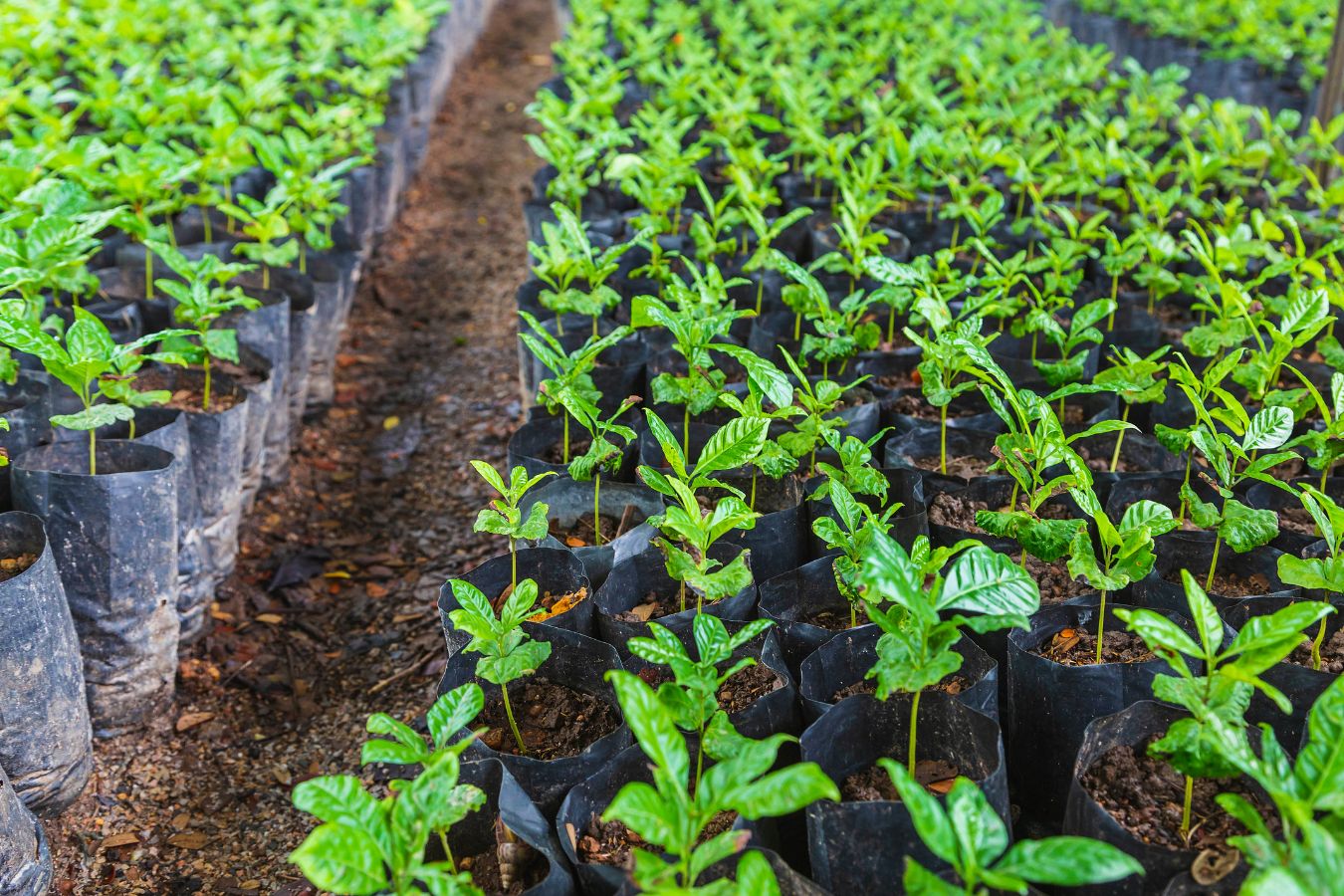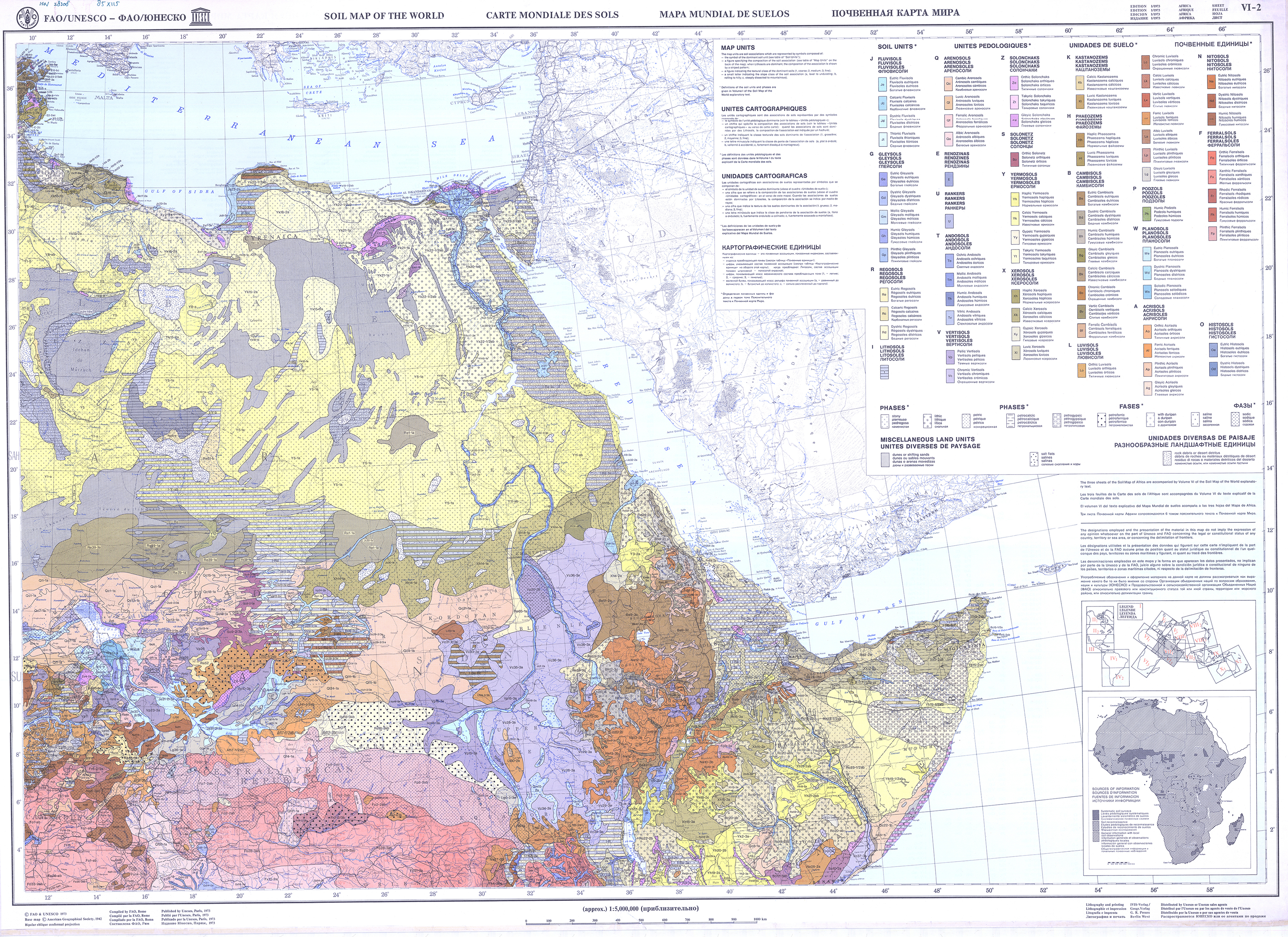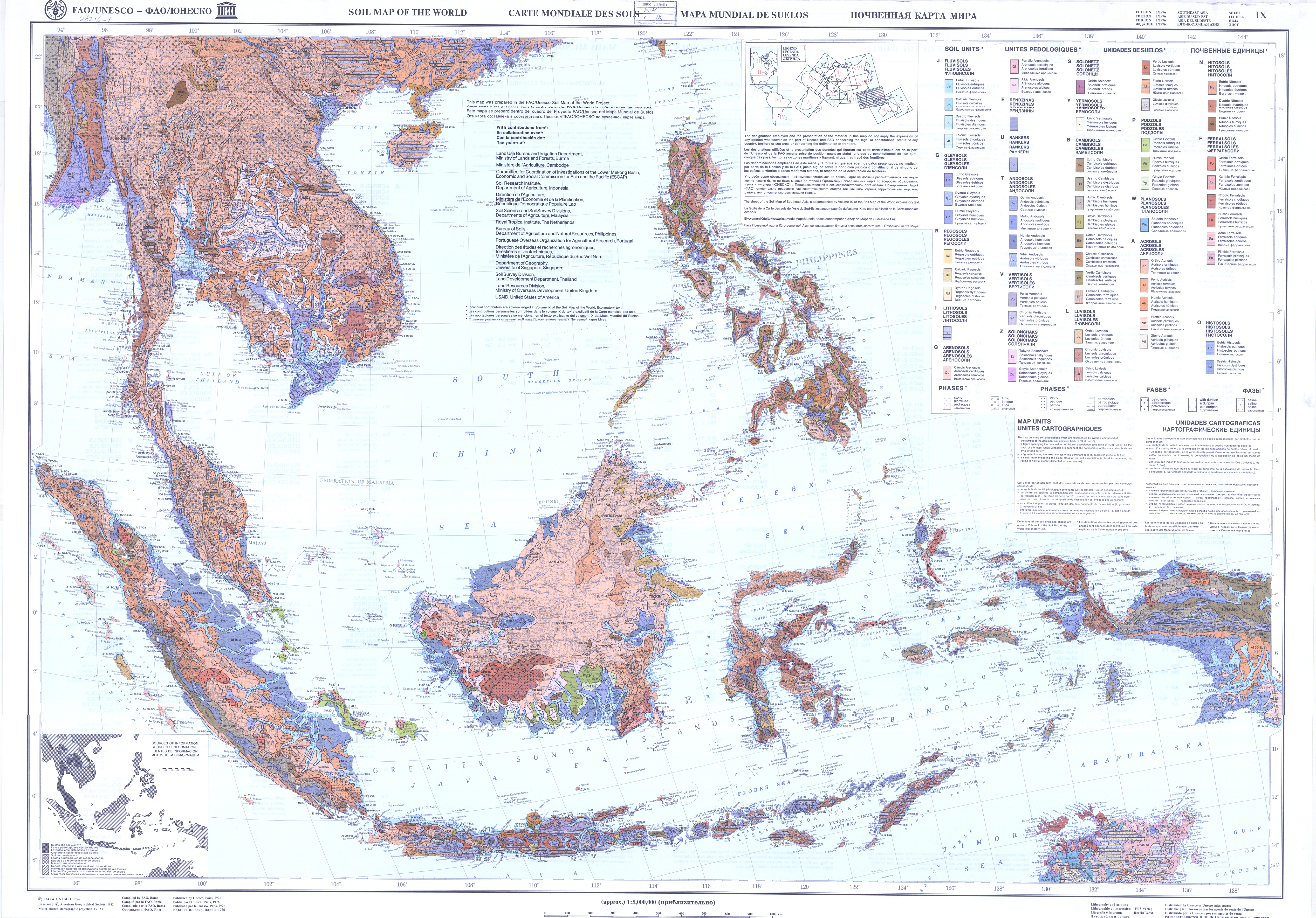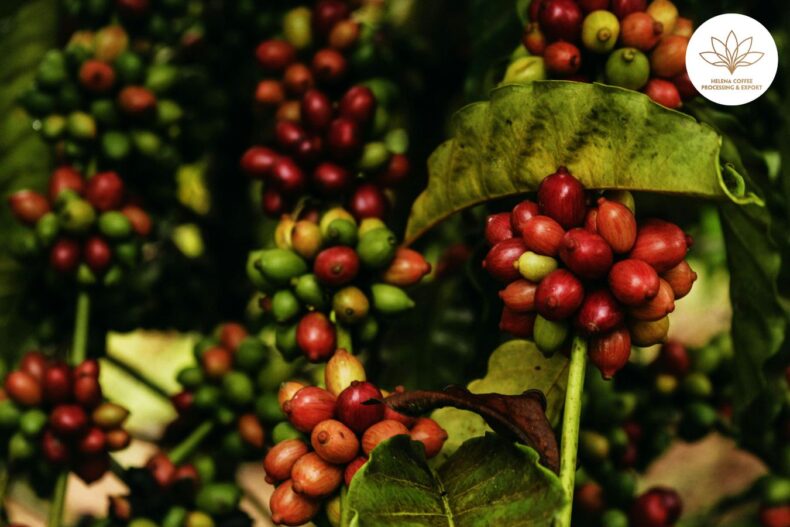
Coffee Growing Techniques: In addition to what plants get from the air and water (carbon, oxygen, and hydrogen), Nutrients are obtained through the soil. Soil and its nutrients can be region-specific, varying with local geology and parent material. So, depending on the location of a plantation in the world, the land management will be different. It can be a microregion-specific science, and some agronomists recommend analyzing soil and leaf tissues several times a year to ensure quality and correct nutrition.

The Food and Agriculture Organization of the United Nations (FAO) classifies soils into 30 categories ( FAO soil groups ). Of these, they specifically mentioned, “ Dystric and Humic Nitosols are the best soils for growing the best coffee, despite the need to fertilize”. FAO, 1985
Arabica coffee is adaptable to soils derived from different base materials. It is reported to grow well on deep, slightly acidic, well-drained, fertile, volcanic, or stony soils of volcanic or cold-origin bees with good humus content (Pursegldve, 1968). Meanwhile, Robusta coffee is not so unique in terms of requirements as Arabica coffee and shows wider adaptability. Robusta coffee can be grown on red sand, clay, or heavy soil in Uganda (Wrigley, 1988). Liberica coffee can also be produced on various grounds ranging from peat to clay and on poorer soils.

In its natural habitat – in the upper primary tropical forests of Ethiopia, Arabica coffee occurs in many layers of the forest ecosystem and is, therefore, a shade-loving plant. Since immemorial, it has been cultivated in the humid montane rainforests of southwestern Ethiopia (Coste, 1992; Wintgens, 2004). With its adaptability, coffee grows in a large ecological environment and has no special requirements for soil. It grows well on the clay-silicon of granite, on the grounds of volcanic origin, or even on alluvial soils (Wrigley, 1988; Mesfin, 1998). Waterlogging will significantly reduce yield and kill coffee plants if prolonged. Therefore, soil texture and depth are critical factors for coffee plant growth.
The soil of the highlands of Ethiopia – the birthplace of coffee plants regularly retains more than 50% of water in their composition. BaristaHustle
Some types of coffee-growing land
The coffee area in the world is about 10 million hectares, mainly in the Americas, Africa, and Asia. Coffee land includes many different geological origins. Coffee can be grown on soil that grows on gneiss, granite, basalt, slate, the soil of volcanic ash origin, sedimentary soil, etc. However, to ensure good growth and development of coffee trees, a long exploitation cycle, the depth of the soil layer must be > 70 cm, porosity about 55 – 60%, and good drainage (BMT Coffee Association, 2021).
According to the Food and Agriculture Organization of the United Nations, based on the soil type map of the world (see details at FAO/UNESCO Soil Map of the World ) shows that the majority of the highland soils in Ethiopia – the source of “terroir” coffee” – are Nitosols. In Africa, Nitosols occur under forests or savanna on terrain dissected with a humid tropical climate. The weathering stage of Nitosols makes them more fertile than Ferralsols (i.e., red-yellow or basalt soil in Vietnam).
Vietnam’s coffee trees are mainly nourished by Ferralsols & Acrisols soils which are considered less fertile than Nitosols, even needing a high reclamation impact.)
Nitisol (Nitosols)
Nitisols are one of 30 soil groups in the Food and Agriculture Organization (FAO) classification system. It occupies 1.6% of the total land area on Earth. Nitosols are mainly found in eastern Africa – at high altitudes, coastal India, Central America, and tropical islands (Cuba, Java, and the Philippines). They are perhaps the most inherently fertile of all tropical soils because of their high nutrient content and deeply permeable structure. Nitosols are technically defined by a substantial accumulation of clay (30% or more by mass and extending up to 150 cm below the surface) and by a clump structure. Iron oxide and high water content are thought to play an essential role in creating soil structure.


Other important Ethiopian soils (also found in Vietnam) suitable for coffee growth include Ferralsols, Acrisols, and Arenosols soils, which are widely grown and tend to be weathered and create stones. These soils are typically acidic to very acidic, and they have significant amounts of organic matter formed from the decay of leaf litter in forest-covered areas (FAO).
Coffee land in Vietnam mainly belongs to the red and yellow soil ( Ferralsols soil, or red basalt soil), accounting for over 86%; gray soil ( Acrisols soil ) and other soils account for about 14%. Particularly in the Central Highlands, the Northwest, the North Central, and the Southeast, the area of coffee grown on the red and yellow soil group is from 90.5 to 99.7%. The coffee area in Kon Tum is mainly grown on gray soil developed on gnai parent rock with a rate of about 87.5%.
Ferralsols – Red basalt soil
Basalt red soil is a unique production material of agro-forestry, a precious resource of each country and each region. Coffee land in Vietnam mainly belongs to the red and yellow soil group, accounting for over 86%; gray and another soil account for about 14%. Particularly in the Central Highlands, the Northwest, the North Central, and the Southeast, the area of coffee grown on the red and yellow soil group is from 90.5 to 99.7%.
Ferralsols, also known as feral soils in the FAO classification, as red and yellow weathered soils whose color results from the accumulation of metal oxides, especially iron, and aluminum (hence they are called red Earth). Ferralsols are formed on geologically old materials in humid tropical climates, with rainforest vegetation growing naturally. Due to residual metal oxides and the leaching of mineral nutrients, they have low fertility and require the addition of lime and manure for agricultural purposes. Crops such as oil palm, rubber, or coffee are suitable (after the primary forest is cleared). Ferralsols occupy less than 6% of the Earth’s continental surface, distributed in a narrow area in the Central Highlands of Vietnam (FAO).

The yellow-red soil group is generally suitable for growing long-term industrial crops, including coffee. Basalt red-brown soil is a type of soil belonging to the group of red-yellow soil distributed mainly in the Central Highlands provinces with physicochemical properties that are very suitable for coffee trees to grow, develop well, and give high yields. However, going through various processes of use and the impact of nature has led to severe desolation and degradation.
The group of red basalt soils ( Ferralsols ) is generally suitable for growing perennial industrial crops, including coffee. Basalt soil in our country is distributed mainly in the Central Highlands provinces with physicochemical properties that are very suitable for coffee trees to grow, develop well, and give high yields. Compared with basaltic soils, gray soil (or Acrisols soil, one of 30 soil groups in the classification system of the Food and Agriculture Organization (FAO)) for Vietnamese coffee cultivation has water, air, and organic compositions. Lower, so the physical properties of water are not favorable for coffee cultivation. Therefore, to ensure a high and stable coffee yield, it is necessary to increase the application of technical measures to improve the water-holding capacity and aeration of the soil.
Currently, coffee grown on gray soil can still achieve the same yield as basalt red-brown soil (4-5 tons kernels/ha) because farmers apply new technical advances in farming, especially annual green pressing solution.
- Green pressing for coffee every year is an organic fertilizer solution that improves fertility, typically by applying bio-organic fertilizers and rotten coffee pods.
Andosol – Volcanic land
Coffee can be grown on many soil types, but the ideal type is fertile volcanic red soil or deep sandy loam. The Earth must be well drained for the coffee plant to grow, with no too heavy clay or sandy soil. Some of the most famous and oldest coffees are grown on volcanic slopes or in volcanic soils, also known as Andosols, one of the 30 soil groups in the Food and Agriculture Organization (FAO) classification system. Andosol is defined as the soil of volcanic ash origin. Although these soils exist in all climates, they cover less than 0.75% of Earth’s non-polar continental land area. Along with the geographical distribution of volcanoes, they are found along the ‘Ring of Fire ‘),’ in the Rift Valley of Africa and in the volcanic regions of the Mediterranean countries.
Due to the relatively young age of the soil, the typical Andosol is very fertile. They retain many elements in the rock formation; they have not been plundered through hundreds of years of agriculture, have not undergone extensive washout, and are relatively unweathered. As a result, Andosol soils have a high organic matter content, are readily available to many basic cations such as Mg, Ca, or K (which can be easily removed), and contain a high proportion of inorganic vitreous and colloidal materials. profiles, such as allophane, imogolite and ferrihydrite. Therefore, in addition to coffee, Andosol soil is suitable for the intensive cultivation of many general crops, including fruit trees, maize, tea, coffee, and tobacco. Etc.

Soil quality requirements
Coffee grows well under certain physical and chemical conditions of the soil (Willson, 1985). Among the material properties, soil structure that allows good drainage is essential because waterlogging significantly reduces yields and even leads to the death of coffee plants if they stay long enough in flooded conditions.
Heavy clay soils are generally unsuitable for growing coffee because they have poor drainage, making penetration and root growth difficult or impossible. Water capacity and depth are two other characteristics that need to be considered when planning coffee farming. The high water capacity helps maintain transpiration during the dry season and provides sufficient water availability. The deep soil layer allows root growth by providing a larger volume of soil containing more water and nutrients, Around the coffee tree.
In some areas such as Papua New Guinea, coffee is successfully grown where there is high rainfall, short dry season and frequent cloud cover on clay substrates only 15 to 20 cm deep on heavy clay soils that are not rooted intrusive coffee, Wilson, 1985
The most critical (chemically) soil properties for coffee plant growth and yield are the pH (acidity/alkalinity) and the number of nutrients available to the plant. Various reports have shown that coffee should be grown on soils ranging from acidic (pH below 4.0) to slightly alkaline (pH up to 8.0). However, not all extremes are appropriate; somewhat acidic soil is still supported in more studies.
Soil texture (physical)
The essential requirement for coffee-growing soil is good drainage. Waterlogged soil will significantly reduce coffee yields and can kill plants if waterlogged for a long time. The Earth for growing coffee must have a minimum depth of 70 cm. The deeper the soil layer, the stronger the roots grow, digging deep into the ground to absorb water and nutrients to feed the plants. In some soils, such as red soil, the roots can reach up to 3m deep (BMT Coffee Association, 2021). On the contrary, if the soil layer is too thin, coffee tree roots cannot penetrate deeply, making the tree less drought-tolerant. Deep, porous, well-drained topsoil are the most critical factors that create conditions for coffee to grow well.

In the book The Vietnamese Coffee Tree (2021), Dr. Hoang Thanh Tiem said: The coffee roots are very aerobic and require a lot of oxygen, so heavy, poorly drained clays are unsuitable for growing coffee. In contrast, light sandy soils, too fast draining, and poor moisture retention is unfavorable for coffee growth and development.
Chemical requirements
In the Handbook of Robusta Coffee of the Uganda Coffee Development Authority (Uganda is currently the 4th largest producer in the world), it is mentioned: “Coffee can grow on many different types of soil. But for the best root development and high yield, it is necessary to have fertile, aerated, free-draining, slightly acidic, deep soil with good humus content and a minimum depth of 1-1.5m in the soil: Wet places and 3m in drier areas. The ideal soil type is volcanic red or sandy loam with good structure and texture and rich in the organic matter without waterlogging. Avoid heavy clay or poorly drained soil for good yields. In addition, the soil should only be slightly acidic, with a pH between 5.5 and 6.5. A pH level below 5.5 will limit crop yield, and at this level, adequate liming is required to bring the pH level back into the acceptable range.”
The soil’s organic matter content is a critical indicator of soil fertility. High organic content often accompanies loose soil and high nutrient supply capacity for hilly soils. Soil requirements for growing coffee must have more than 3% organic content. If the ground has too low organic content, before planting coffee, measures must be taken to improve the soil with green manure crops, beans, etc., or invest a lot of manure when planting new plants to ensure the growth of plants. Good.
Soil fertility in areas with primary forests can support large-scale farming for several years without additional fertilizers. Therefore, the initial fallow lands allow for the comprehensive cultivation of various food and industrial crops, including coffee, rubber, cassava, maize, etc. However, after two to five crops, The number of nutrients decreased to the point that farmers were forced to leave their fields to plant new ones. As a result, deforestation, already widespread, is still increasing due to population pressure.

Currently, Vietnam’s coffee soil is very acidic (pH 4.32 – 4.43), accounting for 63% of the total samples analyzed.
Source: WASI, 2013, 2014
- Soil pH is the term used to denote the amount of hydrogen (H) and aluminum (Al) cations in the soil. When hydrogen or aluminum levels become too high (the ground becomes too acidic), the soil’s ability to exchange cations is negatively charged. The nutrients needed for plant growth are pushed out. . Over time, the Earth will become more acidic as calcium and magnesium are leached out. Hydrogen is added to the soil by decomposing plant residues or due to the ammonium nitrification that occurs when fertilizing. Urea. To solve this problem, people will apply lime to neutralize the amount of acid, also known as pH regulation in the soil.
Soil biology
Microbial activity increases with increasing temperature, when more organic carbon is available as a food source, and when the soil pH is closer to neutral (pH around 7). Microbial activity is essential because microorganisms release nitrogen and other nutrients for plants to absorb. On the other hand, nutrient availability depends on the soil’s solubility. In acidic media, the solubility of essential nutrients such as phosphate, iron, manganese, and aluminum is reduced (Pavan and Chaves, 1996 & Edison Martins Paulo I; Enes Furlani Jr., 2010 ).
The Food and Agriculture Organization of the United Nations (FAO) mentions this in their definition of the ideal soil for coffee: “Coffee can be grown on many different types of soil, but it is ideal. Especially fertile volcanic red soil or deep sandy soil, humus soil. The soil is yellow-brown, rich in alluvium, and less preferred. Avoid heavy clay or poorly drained soil.” The FAO advises farmers to avoid planting in the bottom third of steep hills as these areas are more prone to waterlogging.

Plants like coffee require well-drained, non-waterlogged, or simply aerated soil. Such soil is described as “aerobic.” In contrast to ” anaerobic ” conditions, soils that are heavily textured (clay), compacted, wet, or flooded tend to be anaerobic because they have less oxygen to carry out oxidation reactions. . Soil anaerobic bacteria are also responsible for widespread soil-borne diseases.
Finally, it is irreversible in the context of the challenges posed by deforestation, land degradation, and soil quality deterioration, along with the likely impacts of climate change on environmental sustainability and coffee genetics. Understanding soil conditions is essential for designing and implementing appropriate management options for improving soil fertility and promoting natural forest resources through incentives & practices. Sustainable agricultural production practices.
This article is for research purposes and provides basic concepts, and does not represent the views of the author. To apply in production practice, you should rely on in-depth agronomic analysis to find a treatment plan suitable for local soil conditions.
